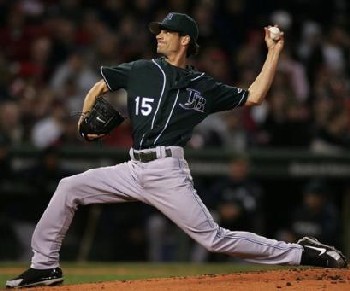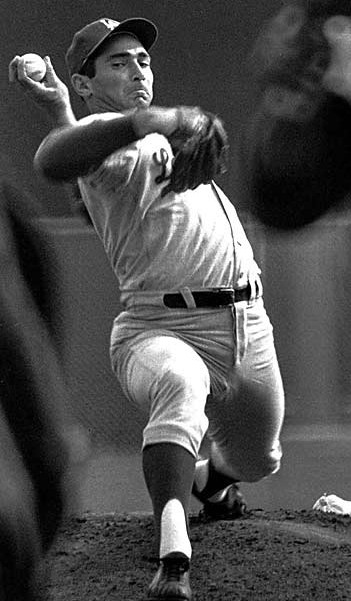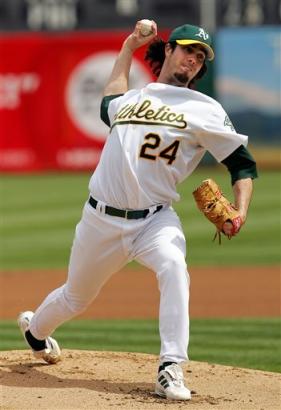quote:
Originally posted by BobbleheadDoll:
We were taught to draw a line from the middle of your post foot instep to the target. Your plant should land on or as close to the line without going over it. In a gym we used the BB lines to practice this. If your foot crosses over the line it was referred to as throwing accross your body. This meant that your hips were stopped from a smooth rotation by your thighs interfering with each other.
I agree that you're not fully utilizing your hip rotation if you do this. When striding straight toward the target, your hips rotate until they're squared up to the target. When striding closed, the hips don't get squared up to the target. This can certainly affect velocity but control is often the more significant problem.
quote:
Having said that I know 90mph guys who do this but struggle with control.
The source of the control problems is this. Even though the lower body strode (is that a word?) offline from the target, the upper body still tries to get back online. The shoulders want to square up to the target at release. If the pitcher can make this happen strictly by adjusting the amount of shoulder rotation, then he might be ok. But what often happens is that the pitcher bends to the glove side at the waist to help get the shoulders back online. This bend represents an inappropriate late posture change that messes with the release point as well as movement on breaking pitches.
By the way, a lot of times this can be corrected or at least improved by simply changing the starting position on the rubber. The change is based on where the pitcher's drag line finishes.
quote:
The shoulder rotation is a different issue. I know many instructors who do not want your shoulders to rotate back too far but prefer your arm and shoulder to go straight back inline with your front shoulder. you can see from the photos that many great pitchers take their shoulders way back. So who is right ? Many blame shoulder ihjury on wrapping the shoulder too far back. I remember when my son was being fine tuned one year and the scout told him to get to a full load position and the scout placing his shoulder forward so it pointed straight back.
You're right that many pitchers rotate the back shoulder beyond straight back. In Tom House's book,
The Pitching Edge, there is a table showing the shoulder alignment for a number of the top pitchers and they all rotate the back shoulder beyond straight back. They do is partly because their flexibility allows it (in fact, requires it to maximize the stretch reflex in the core muscles thereby maximizing velocity?) and partly to adjust their timing. I'm not aware of many shoulder problems being attributed to this reverse rotation. In fact, part of what looks like reverse rotation is simply scap loading taking place and most agree that is a normal part of pitching. Ultimately, I think the amount of reverse rotation a pitcher has is part of his specific make-up. It's one characteristic that makes pitchers different from each other and there's nothing wrong with that. It's a non-teach to me.







